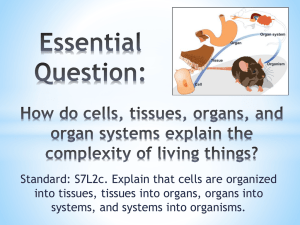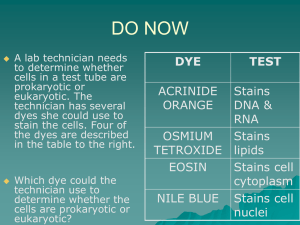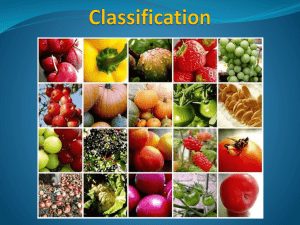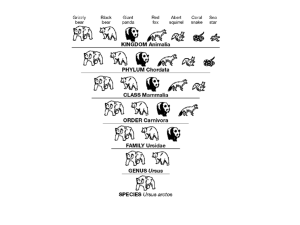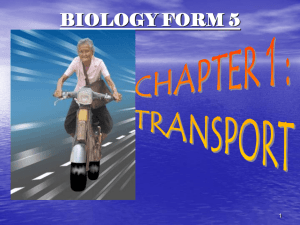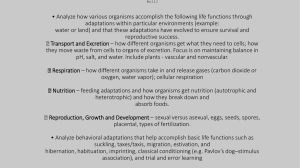3-2 summary levels of organization
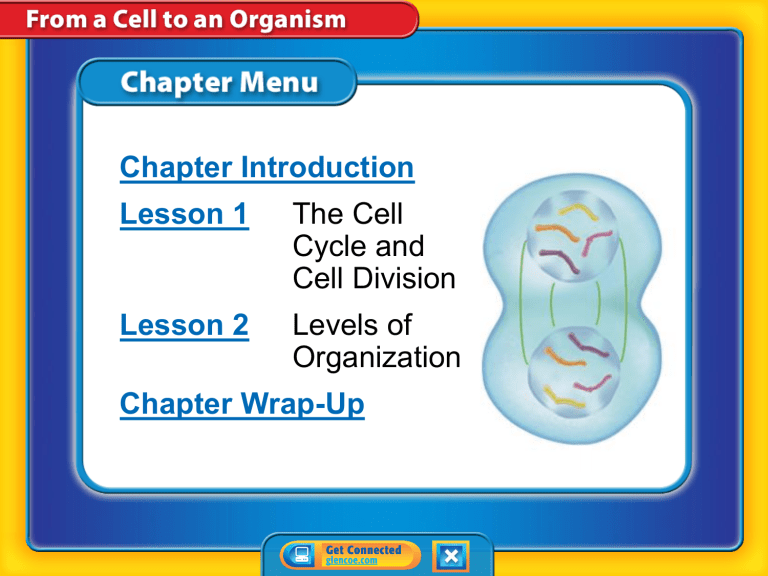
The Cell
Cycle and
Cell Division
Levels of
Organization
Chapter Wrap-Up
How can one cell become a multicellular organism?
Levels of Organization
• How do unicellular and multicellular organisms differ?
• How does cell differentiation lead to the organization within a multicellular organism?
Lesson 2 Reading Guide
Levels of Organization
• cell differentiation
• stem cell
• tissue
• organ
• organ system
Lesson 2 Reading Guide - Vocab
Unicellular Organisms
Unicellular organisms carry out all life processes, including responding to the environment, getting rid of waste, growing, and reproducing, within one cell.
• A unicellular organism made of one prokaryotic cell is called a prokaryote.
• A unicellular organism made of one eukaryotic cell is called a eukaryote.
Lesson 2
Unicellular Organisms
(cont.)
• A cell without a membrane-bound nucleus is a prokaryotic cell.
• A eukaryotic cell has a membrane-bound nucleus and many other specialized organelles.
Lesson 2
Multicellular Organisms
Multicellular organisms are made of many types of eukaryotic cells working together, each with a specialized function.
How do unicellular and multicellular organisms differ?
Lesson 2
Multicellular Organisms
(cont.)
• All cells in a multicellular organism come from one cell: a fertilized egg.
• The process by which cells become different types of cells is called cell differentiation .
Lesson 2
Lesson 2
Multicellular Organisms
(cont.)
Stem cells are unspecialized animal cells that are able to develop into many different cell types.
fiber
Science Use a long muscle cell
Common Use a thread
Lesson 2
Multicellular Organisms
(cont.)
• Plants have unspecialized cells similar to animal stem cells.
• These cells are grouped in areas of a plant called meristems.
Lesson 2
Multicellular Organisms
(cont.)
Tissues are groups of similar types of cells in multicellular organisms that work together to carry out specific tasks.
tissue from Latin texere , means “weave”
Lesson 2
Multicellular Organisms
(cont.)
• Humans, like most other animals, have four main types of tissue: muscle, connective, nervous, and epithelial.
• The three main types of plant tissue are dermal, vascular, and ground tissue.
Lesson 2
Multicellular Organisms
(cont.)
• Organs are groups of different tissues working together to perform a particular job.
• Organ systems are groups of different organs that work together to complete a series of tasks.
Lesson 2
Multicellular Organisms
(cont.)
Multicellular organisms usually have many organ systems that work together to carry out all the jobs needed for the survival of the organism.
How does cell differentiation lead to the organization within a multicellular organism?
Lesson 2
Lesson 2
• A unicellular organism carries out all the activities necessary for survival within one cell.
• Cells become specialized in structure and function during cell differentiation.
Lesson 2
• Organs are groups of different tissues that work together to perform a job.
Lesson 2
What is the process by which cells become specialized?
A.
photosynthesis
B.
vascular development
C.
prokaryotic process
D.
cell differentiation
Lesson 2
What are the unspecialized animal cells capable of developing into many different cell types?
A.
fibers
B.
stem cells
C.
meristems
D.
tissues
Lesson 2
What is the term for groups of different organs that work together to complete a series of tasks?
A.
tissues
B.
organisms
C.
organ systems
D.
stem cells
Lesson 2
Do you agree or disagree?
4.
Unicellular organisms do not have all the characteristics of life.
5.
All the cells in a multicellular organism are the same.
6.
Some organs work together as part of an organ system.
Lesson 2

